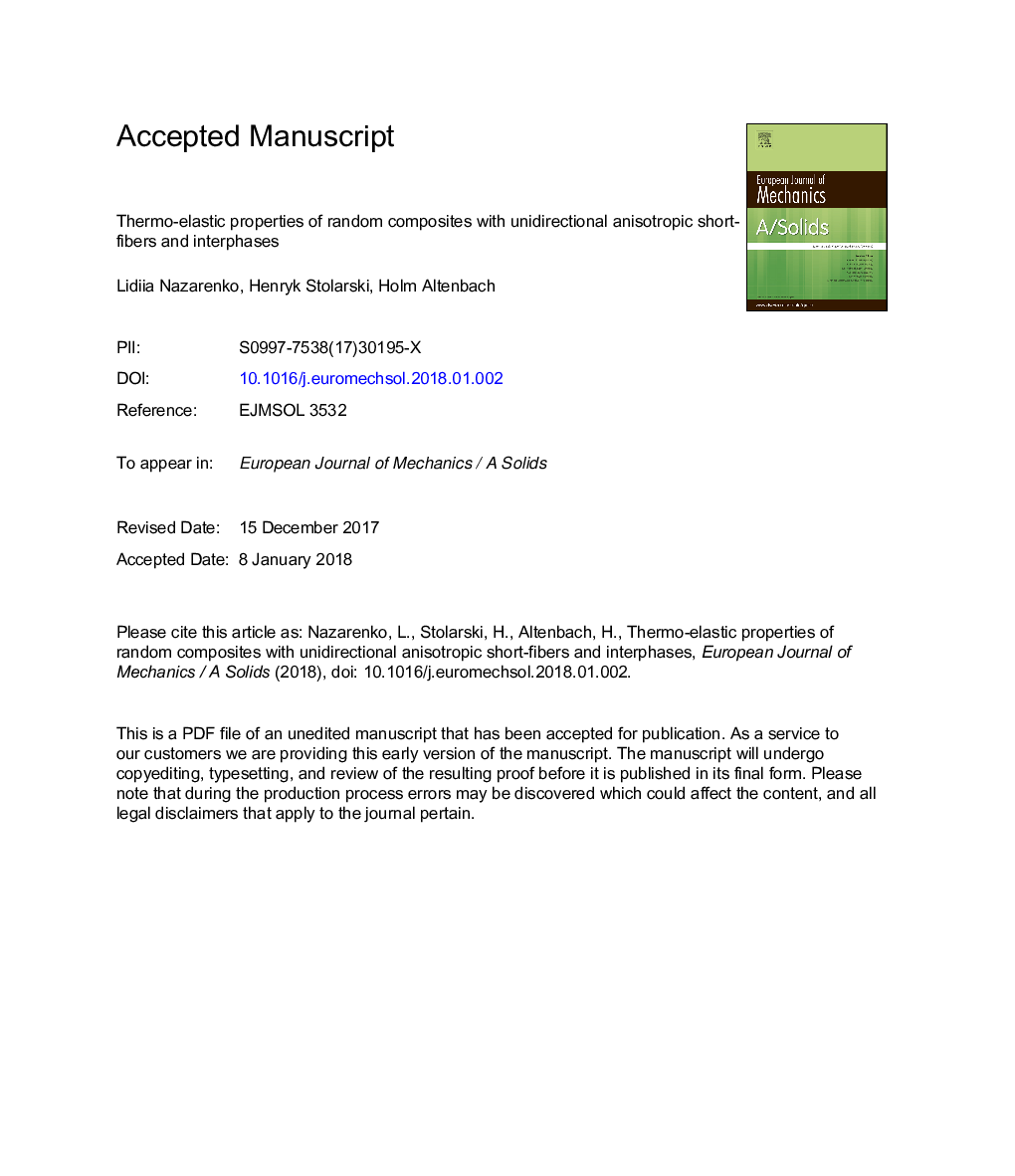| Article ID | Journal | Published Year | Pages | File Type |
|---|---|---|---|---|
| 7170224 | European Journal of Mechanics - A/Solids | 2018 | 56 Pages |
Abstract
An approach to thermo-mechanical analysis of effective properties of transversely isotropic, parallel, short-fiber, random composites with various models of anisotropic interphases represents the original contribution of this work. It is founded on a novel combination of two basic prior developments. One is the concept of the energy-equivalent inhomogeneity, recently introduced by these authors, and extended here to include thermal effects. It transforms the problems with interphases to problems without interphases. The other development is the method of conditional moments, introduced long ago to analyze random composites without interphases. As such, the method is a perfect match for the idea of equivalent inhomogeneity. Together they provide a powerful tool for analysis of problems difficult to solve using other approaches. In addition, it leads to closed-form relations obtained for the effective elastic stiffness tensor and the effective coefficient of thermal expansion of composites. To demonstrate the versatility of the approach, composite containing randomly distributed unidirectional short fibers with anisotropic interphases is discussed here for the first time. As a result, the numerical examples could not be evaluated comparatively. Comparisons are made only in a few special cases of infinite fibers, for which some earlier solutions are available, and the agreement was found to be remarkably good. Both Gurtin-Murdoch and spring layer models of interphases have been included.
Related Topics
Physical Sciences and Engineering
Engineering
Mechanical Engineering
Authors
Lidiia Nazarenko, Henryk Stolarski, Holm Altenbach,
